Whether you’re headed out in support or dissent, you should know what you’re getting into before you go and join a protest. Even if you think the event is purely peaceful, someone else, another protest group, or the police may all have different ideas. Here are some tips to prepare before you go out to have your voice heard.
According to Dr Daniel Joyce, a lecturer at UNSW Law:
There is no free standing right to protest, but protest is protected indirectly and directly by the law. Firstly, the common law protects protest as a fundamental right and freedom, which in combination with an interpretive tool – the principle of legality – can mean that laws affecting protest might be interpreted restrictively.
Secondly, even without a bill of rights, the Australian constitution provides indirect constitutional protection for protest – as political speech – via the implied freedom of political communication.
.. Thirdly, protest is protected in various statutes regulating police powers, public order and local government.
Before we go too much further, it’s important to note that these tips will help you stay comfortable and be prepared in case something bad happens. They’re no replacement for following police direction, using common sense, and leaving the area if ordered or if things get dangerous. Since history has shown us that even the most peaceful protests can turn dangerous, and that people on any side can be injured, it’s important to be prepared for anything that may happen before you leave the house.
Photo by Debra Sweet.
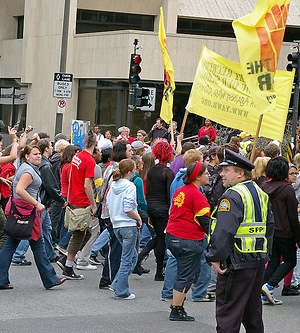
Know Your Rights
The most important thing you can do before you leave the house is research. If you’re planning to go to a march, or protest, it’s important to know what rights you do and don’t have. Unfortunately, it’s very easy to inadvertently walk from a public place to a private one, or assume private property is public, and find yourself in trouble with the police.
Do your homework and find out whether the organisation organising the protest has a history of non-violent protests, and find out whether they plan to gather in a public, safe space. Knowing how to deal with the police can help you deal with authorities on the scene in a professional and non-confrontational manner can help. Many organisations will offer tips on their web site or hand out pamphlets at protest outlining what you should expect.
Finally, even though you may be within your rights, be aware that arguing that you have a right to stand on one side of the street when a half-dozen police officers want you to move to the other side is probably a losing — and meaningless — battle. Unless your goal is to get arrested, pick your words and your battles carefully. You may be better off complying with police direction first and arguing your rights later. You’re no good to your cause if you’re injured or worse and can’t continue protesting.
Photo by Jeremy Noble.
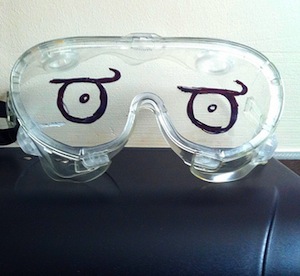
How to Dress for a Protest
I’ve seen protests get disorderly over everything from war or foreign aid to seemingly harmless topics like arts and music in schools. Before you go to a protest, think about the kind of event it will be, whether or not there will be a counter-protest, and whether or not there will be a large police presence. Dress accordingly.
- Wear comfortable shoes. You’ll be on your feet for a long time, sometimes for long hours and you may be marching. Wear shoes you’re comfortable standing, walking, or running in.
- Wear multiple layers that cover your skin. Wearing layers will make sure you’re comfortable in any temperature. Wearing clothing that covers your skin will reduce your exposure to the sun, wind, and yes, to gas or pepper spray if things get out of hand. Dressing in thick layers will also help soften the impact from beanbag rounds and rubber bullets. However, don’t do this thinking you’ll be able to go toe to toe with police. At most, it won’t hurt as much so you have time to get out of the area without being incapacitated by pain.
- Wear goggles or shatter-resistant glasses if you plan to be up front. If you plan to be on the front lines in front of a counter-protest or the police, you need something to protect your eyes in case things get ugly, preferably something with a seal around the eyes. Sure, you don’t want pepper spray in your eyes, but you don’t want spit from someone shouting at you in your eyes either.
- Wear a zippered backpack. Don’t keep your personal belongings in a wallet. Any large crowd of people is perfect for pickpockets, even protests. Keep your belongings in a zippered backpack that you wear square on your back instead.
- Wear a second backpack on your stomach. Stuff this second backpack with towels or a second set of clothes in a sealed plastic bag. The padding on your front will give you a little protection if the police jab you back with a baton (and give you a chance to comply and move back without falling down in pain) and gives you another place to store items you want quick access to, like an ID card, permit to gather, or something else you may need to present to the police when asked.
Hopefully, you won’t need any of these, but the point is that you’ll be happy you have them if things go south in a hurry. Also, when putting on items like goggles or a gas mask, keep in mind that you’re walking a line between being prepared for what may happen and telling others that see you that you expect trouble. You may make yourself a target for police, or draw the ire of other protesters who just want to peaceably gather without any trouble. Keep this in mind when packing.
Photo by Alistair.
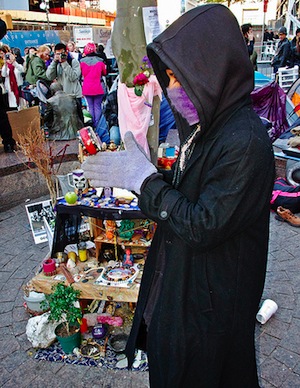
How to Pack for a Protest
In addition to identification and any permits you may be required to carry, it’s important to pack properly for a protest. Unless you’re a journalist or photographer, leave the delicate and fragile equipment at home. Pack only the absolute minimum you need to establish your identity, buy food or make a phone call if needed, and take care of yourself or your friends in any situation. Here’s what should go in your backpack.
- A first-aid kit. Bandages, antibacterial ointment, a nylon wrap bandage, and some basic wound-care essentials will do you wonders. Even if things stay peaceful, a bandage wrap will come in handy in case you twist your ankle, and a few band-aids will come in handy if someone takes a tumble on the pavement. Your first-aid kit should contain some simple analgesics as well, like aspirin or ibuprofen.
- An inhaler, epipen, any essential medication you can’t do without, and personal hygiene accessories. This is all preventative. If you plan to be on the march for a long time, you may need them, but if you wind up getting into trouble with the police or held in an isolated area away from others, you’ll want to make sure you have basics like an inhaler or epipen on you in case you need it. The same applies for hygiene products — you may not be allowed to leave before you need them, and the police are more likely to bring you an inhaler from your bag then they are to just discharge you because you’re having trouble breathing.
- A dry bandana over your hair and another soaked with vinegar or cider vinegar. Keep the soaked bandana in a sealed plastic bag until it’s needed. If your group winds up being tear gassed, the soaked bandana can provide some relief until you can leave the area safely and calmly, without getting trampled. Most tear gas isn’t actually “gas,” but a chemical suspended in fine smoke, so you don’t need to show up in a full gas mask, but if you can get one from a surplus store, it might help to have stashed in your backpack. Instructables has several methods to make one as well.
- Baby wipes and eye drops. Perfect for general cleaning, and to wipe your skin or clothing clean if you’re exposed to gas, pepper spray, or doused with anything by other protesters. Be careful though, oil-based moisturizers and and cleaning solutions can actually make chemicals in tear gas or pepper spray stick to your skin. Make sure to get water-based or flushable wipes, or make your own with paper towels and a solution of baking soda and water. Keep the wipes and your eye drops in sealed containers.
- Pen, paper, and a marker. Just in case you need to document anything like names, organisations at the protest, badge numbers, and so on.
If you’ll be out for a while, pack some snacks and water. Make sure you’re fed and watered before you leave, too. Aside from this, keep as little as possible on your person. If you’re detained or have to leave your items behind, you don’t want to carry anything with you that you would terribly miss.
Photo by David Shankbone.
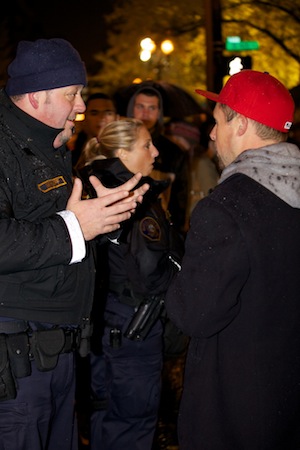
Be Smart, Know When to Stay, and Know When to Leave
Often, people for and against the same causes, legislation, political parties, or even global events gather in the same place to be heard, and arguments often ensue. Usually it’s a few angry people that just can’t resist taunting the other side or inciting the police, but as soon as a scuffle breaks out, the police are quick to jump in and disperse the crowd entirely, make arrests, or at least separate people. I’ve seen this happen for all sorts of gatherings, from war protests to street celebrations.
The important thing to know if you’re going out to enjoy your right to assemble, participate in some civil disobedience, or just make your voice heard, is to be smart, prepare properly, and when the time comes to leave or obey police direction, that you do so. If things get out of hand, get out of the way and away from the front lines as quickly as possible. If you can, get indoors where you can recover, change clothes, or use any of the supplies you packed if you need to. Don’t go toe to toe with the police, don’t antagonise them, and don’t start an altercation with opposing protesters, you’ll just make trouble for everyone.
In the end, your goal should be to protest peacefully, protect yourself defensively, and be ready for whatever may happen, even if things go poorly. Hopefully that won’t be the case, but if it is, you’ll have what you need to stay safe, uninjured, and able to stay as long as possible to have your message heard.
Photo by Ray Terrill.
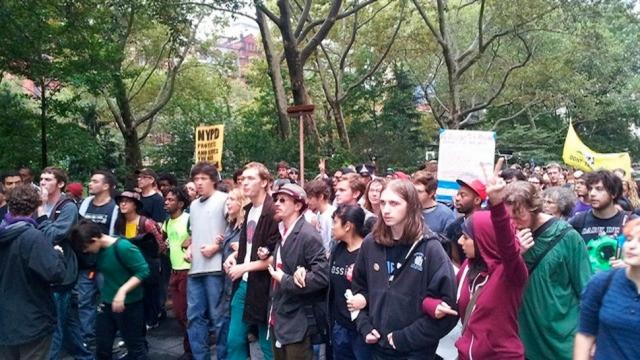
Comments
3 responses to “How To Protest Safely And Legally”
Getting a fucking job might help.
A wild angry conservative has appearing shouting nonsense.
Reads a bit like how to prepare for a violent confrontation.